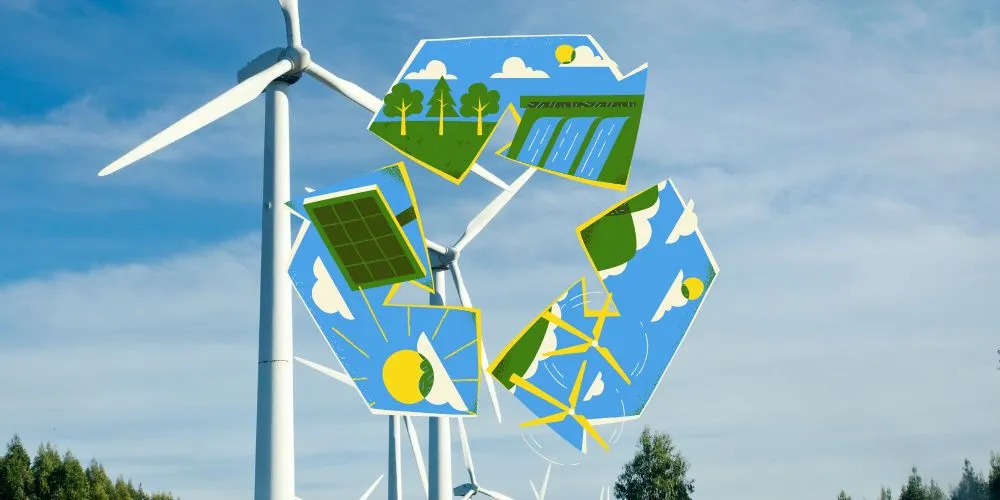Microgrids have emerged as a transformative energy management solution, promising increased resilience, efficiency, and sustainability. These self-contained energy systems can operate independently or in conjunction with the main grid, providing reliable power in various applications. This comprehensive exploration delves into the world of microgrids, uncovering their significance, working principles, applications, challenges, and transformative potential for a more resilient and sustainable energy future.
The Significance of Microgrids
Microgrids represent a groundbreaking shift in how we produce, distribute, and consume energy. They offer several key attributes that contribute to their significance:
Energy Resilience
It enhances energy resilience by providing a localized and reliable source of power. During grid outages caused by natural disasters or other emergencies, it can continue to operate, ensuring essential services like hospitals, emergency response centers, and critical infrastructure remain functional. This resilience is crucial for maintaining public safety and minimizing economic disruptions.
Integration of Renewable Energy
It enables the seamless integration of renewable energy sources such as solar panels and wind turbines. Combining these clean energy technologies with energy storage systems reduces reliance on fossil fuels and decreases greenhouse gas emissions. It aligns with global efforts to combat climate change and transition to a sustainable energy system.
Energy Efficiency
Microgrids promote energy efficiency by optimizing the use of locally generated power. They can intelligently manage energy resources, match supply with demand, and reduce wastage. This improved efficiency leads to cost savings and a lower environmental footprint.
How Microgrids Work
Microgrids operate on the principles of distributed energy generation and advanced control systems, enabling them to function independently or in coordination with the main grid.
Distributed Energy Resources
Microgrids comprise various distributed energy resources (DERs) such as solar panels, wind turbines, combined heat and power (CHP) systems, and energy storage devices like batteries. These DERs work together to generate, store, and distribute electricity within the microgrid.
Advanced Control Systems
Sophisticated control systems and software govern microgrid operations. These systems monitor energy production, consumption, and grid conditions in real time. They enable seamless transitions between grid-connected and islanded (standalone) modes, allowing microgrids to respond to changing circumstances swiftly.
Islanded Operation
In islanded mode, a microgrid can disconnect from the main grid and operate autonomously. This capability ensures a continuous power supply during grid failures or planned maintenance. Microgrid controllers manage electricity distribution, prioritizing critical loads and optimizing energy resources.
Applications of Microgrids
Microgrids find applications across diverse sectors, each benefiting from their unique capabilities and advantages.
Remote and Off-Grid Communities
In remote or off-grid areas, it provides a reliable and sustainable source of electricity. They reduce dependence on expensive diesel generators and promote energy independence. Remote communities, islands, and military bases often use microgrids for energy.
Commercial and Industrial Facilities
Commercial and industrial complexes use microgrids to improve energy efficiency and reduce operational costs. It can integrate with existing power infrastructure, enhancing grid resilience and ensuring uninterrupted operations during power outages.
Universities and Campuses
Educational institutions and large campuses deploy microgrids to manage their energy needs efficiently. It helps universities reduce their carbon footprint and energy expenses by combining renewable energy sources and cogeneration systems.
Emergency Response and Healthcare
It plays a critical role in emergency response and healthcare facilities. Hospitals, fire stations, and emergency shelters rely on microgrids to maintain essential services during disasters, ensuring patient care and public safety.
Challenges and Ethical Considerations
While It offers numerous benefits, they also face challenges and ethical considerations:
Initial Costs
The upfront costs of designing and implementing a microgrid can be substantial, which may deter some organizations from adopting this technology. Ethical considerations involve making microgrid solutions accessible to a broader range of communities and organizations, especially those with limited financial resources.
Grid Integration
Coordinating microgrids with the main grid and ensuring interoperability can be complex—ethical considerations center on creating standards and regulations that facilitate grid integration while maintaining system stability and security.
Accessibility and Equity
Microgrid deployment should prioritize equitable access to energy resilience and sustainability benefits. Ethical considerations involve addressing disparities in microgrid adoption and ensuring that vulnerable communities have access to these technologies.
The Future of Microgrids
Microgrids are poised to play an even more substantial role in shaping the future of energy generation and distribution, fostering resilience, sustainability, and energy democratization.
Advanced Energy Storage
Advancements in energy storage technologies, such as advanced and flow batteries, will enhance the storage capabilities of microgrids. It will allow for better managing intermittent renewable energy sources and improved grid stability.
Artificial Intelligence and Machine Learning
Integrating artificial intelligence (AI) and machine learning (ML) into microgrid control systems will enable predictive and adaptive operations. AI-driven algorithms can optimize energy generation, storage, and distribution in real-time, improving energy efficiency and cost-effectiveness.
Community Microgrids
Community-based microgrids will become more prevalent, enabling neighborhoods to share energy resources and enhance local resilience. It will empower communities to take control of their energy future and reduce reliance on centralized utilities.
Conclusion
Microgrids are not just about electricity; they are about transforming the energy landscape into more resilient, efficient, and sustainable. Their significance lies in their capacity to enhance energy resilience, integrate renewable energy, and promote energy efficiency. As it continues to evolve, ethical considerations, accessibility, and equity must guide its development and deployment.
The future they envision is one where energy resilience is a shared responsibility, renewable energy sources are seamlessly integrated, and communities have greater control over their energy destiny. They are the architects of a future where power outages are rare, clean energy is abundant, and sustainability is a cornerstone of our energy systems.











